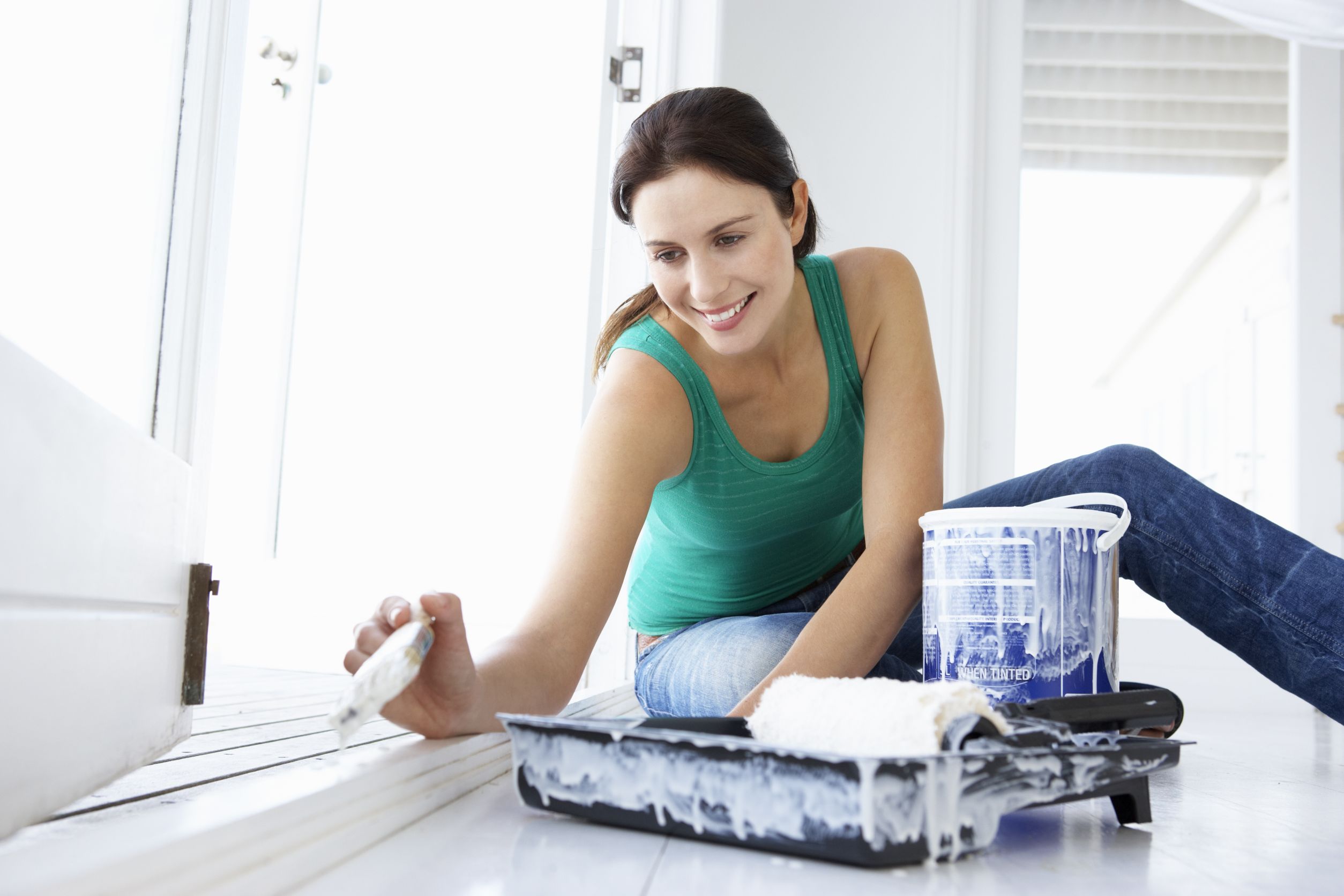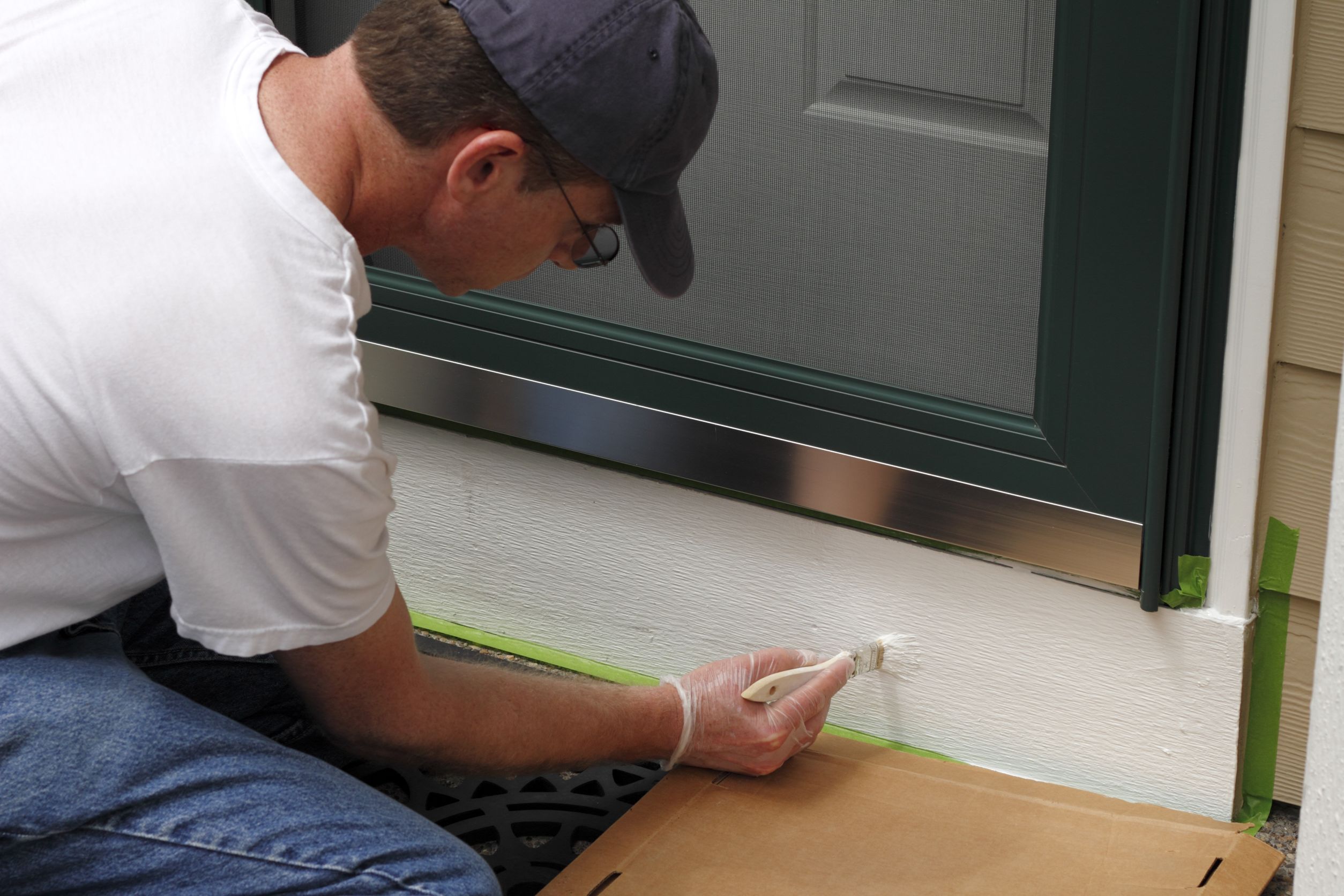How to Paint Your Home
Finding the Colors

Finding the Colors
Color names, numbers and paint brands can be found on the inside back cover of your New Home Care and Maintenance Guide. David Weekley Homeowners are offered a discount on paint purchases from your specified paint company. Please contact our Warranty Service Department for additional information.
You can also find small amounts of your interior and exterior paints in your Touch-Up Kit.
Interior Paint Woodwork
Most of the interior woodwork of your home is painted with enamel (oil-based) or latex (water-based) paint. For best results, you can clean both of these types of paint with a soft sponge and soapy water. It is recommended that you wait a minimum of 30 days after move in before washing any painted woodwork.
Interior Paint Walls
Interior Paint Walls
Interior walls are painted with a flat latex paint. Do not scrub the walls in your home as this will remove both the paint and the texture (if applicable). Avoid using soaps, abrasive cleaners, pads or brushes for daily maintenance. Instead, touch up areas using matching paint.
Interior Paint Woodwork

Interior Paint Touch-Ups
As a Homeowner, you are responsible for all interior paint touch-ups, unless provided as part of a warranty repair. When doing touch-ups, spackle may be used to cover any small defects prior to painting. Use a small brush and apply the paint only to the affected area. Work away from the center of the touch-up. This is called “feathering” and will blend the new paint more seamlessly into the existing paint.
Paint does fade over time and new paint may not exactly match the existing paint. Feathering will help to make the difference less noticeable.
If you are touching up an area that has been water stained, use a primer or sealer to block the stain to prevent it from bleeding through the newly applied paint. For best results, apply at least two coats of primer to the area. After the primer has completely dried, apply the touch-up paint. Allow the first coat to dry completely and then apply a second coat if necessary.
Exterior Paint

Exterior Paint
The exterior surface of your home should be painted approximately every five years or as often as your paint manufacturer suggests for your area and climate. Fading will naturally occur on exterior paint due to sun and weather. This is not covered by your warranty. Check the caulking on the exterior of your home on a quarterly basis for any damage. This is critical in preventing rot on any wood trim or siding.
Mildew
Mildew
To clean mildew from your exterior siding, apply a mixture of bleach, water and a household cleaner with mildew killer (such as JOMAX®) to the affected area. The mixture can be applied using a low-pressure sprayer. Discolorations should disappear within a few minutes. Stubborn stains may require repeat applications.
Using a high pressure power washer to clean exterior siding is not recommended.
Exterior Paint Touch-Ups
As a Homeowner, you are responsible for all exterior paint touch-ups, unless provided as part of a warranty repair. You will be provided with a Touch-Up Kit for this purpose. Paint touch-ups are sometimes visible under certain lighting conditions.
Do not paint or caulk when temperatures are below 50 degrees Fahrenheit, above 100 degrees Fahrenheit or when rain is possible.
Before painting, reset any loose nails, remove any peeling or cracked paint with a wire brush and a putty knife, and sand any rough spots. Paint any bare wood with a primer before applying the exterior paint.




